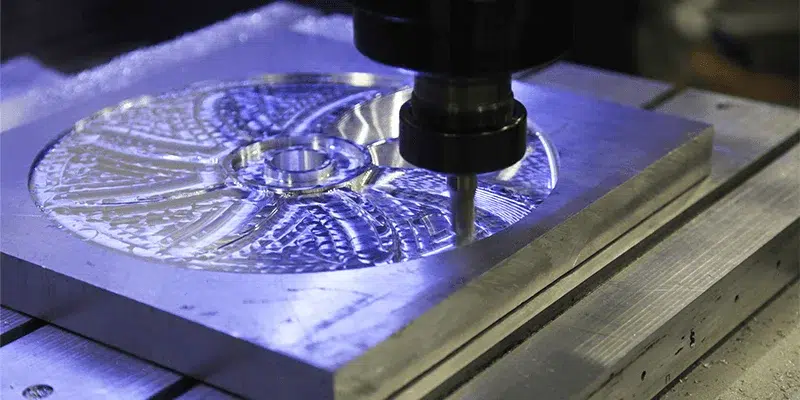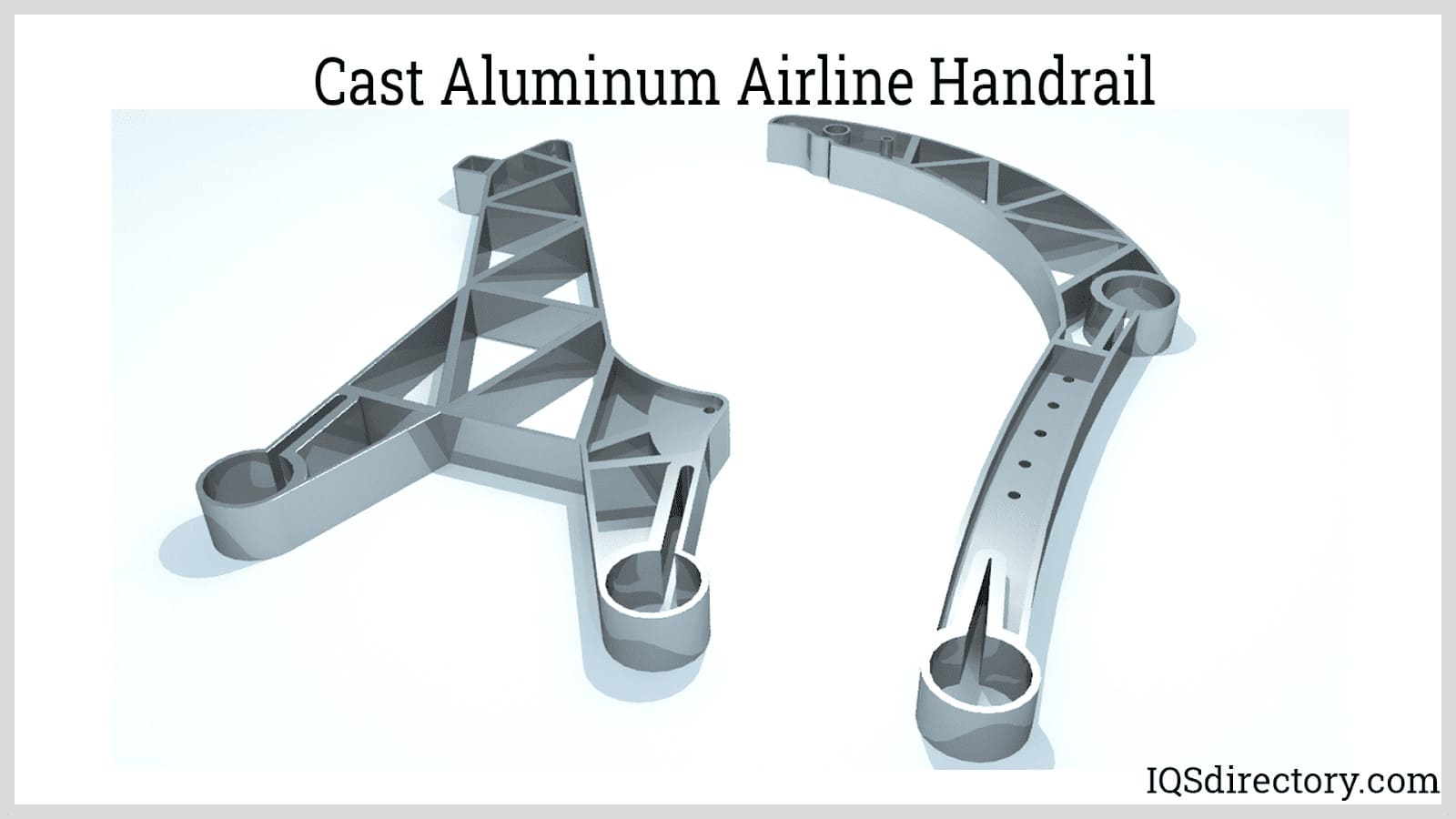A Introductory Resource to Selecting the Best Aluminum Casting Manufacturer
Wiki Article
Exactly How Aluminum Casting Works: Checking Out the Methods and Benefits in Modern Industry
Light weight aluminum Casting is an important process in contemporary manufacturing. It entails forming liquified aluminum with various methods, each with unique benefits. Methods like sand spreading, pass away spreading, and investment Casting cater to different production needs. These methods not only improve product performance however likewise straighten with sustainable methods. Recognizing the nuances of each strategy reveals their value in varied industries. What ramifications do these developments hold for the future of production?The Essentials of Aluminum Spreading
Light weight aluminum Casting is a widely used production process that entails shaping liquified aluminum right into certain forms. This method is vital in different sectors, including vehicle, aerospace, and customer goods. The process starts with melting aluminum ingots in a heating system, reaching temperatures around 660 degrees Celsius. Once the light weight aluminum is liquified, it can be poured right into mold and mildews made from metal or sand, allowing it to cool down and strengthen right into the wanted form.
Sand Casting: A Typical Technique
One of one of the most traditional approaches of light weight aluminum Casting is sand casting, a method that dates back countless years. This process entails creating a mold and mildew from a blend of sand and a bonding agent, generally clay, which develops a tooth cavity in the shape of the desired component. Once the mold and mildew is prepared, molten aluminum is put into the dental caries, permitting it to solidify and cool down.Sand Casting is favored for its versatility and cost-effectiveness, making it suitable for both large and small production runs. The method can suit complex geometries and elaborate designs that may be testing for various other methods. While the surface finish of sand-cast components may not match that of even more contemporary strategies, the capacity to create large spreadings and the convenience of mold and mildew production are considerable advantages. Overall, sand Casting stays a trustworthy choice in the light weight aluminum Casting sector, especially for customized and low-volume applications.
Die Spreading: Precision and Performance
While sand Casting is known for its convenience, die casting offers unparalleled precision and effectiveness in the light weight aluminum Casting procedure. This strategy entails forcing molten aluminum into a steel mold, or die, under high pressure. Such a method assures that the end product shows limited tolerances and a smooth surface finish, minimizing the requirement for comprehensive post-processing.Die Casting is specifically advantageous for high-volume production, as it enables fast cycle times and constant quality across countless parts. The procedure properly decreases product waste, making it an affordable option for makers. In addition, the durability of die-cast parts lends itself to different applications, including automotive, aerospace, and customer products.
Investment Casting: Fine Detail and Intricate Shapes
Investment Casting stands apart in the domain name of light weight aluminum Casting for its capability to produce detailed designs and great details. This approach entails producing a wax pattern that is covered with a ceramic shell. When the shell sets, the wax is thawed away, leaving an exact mold for the aluminum to be put right into. The procedure permits the production of complex forms that would certainly be impossible or difficult to achieve with various other Casting techniques.
In addition, investment Casting can fit a wide variety of weights and sizes, making it functional across many sectors. It additionally makes it possible for the production of parts with tight resistances and slim wall surfaces, which are essential for innovative engineering applications. Consequently, investment Casting is usually chosen for components that call for high dimensional accuracy and surface finish, additional showcasing its importance in contemporary manufacturing.
Advantages of Aluminum Casting in Manufacturing
Light weight aluminum casting deals many advantages that considerably boost making processes. One considerable advantage is its lightweight nature, which lowers transportation expenses and improves power efficiency in final product. In addition, aluminum's superb corrosion resistance extends the life-span of actors components, making them excellent for various applications. The convenience of aluminum Casting strategies enables the production of complicated geometries, making it possible for producers to develop complex designs that meet details needs.Additionally, light weight aluminum has remarkable thermal and electric conductivity, making it appropriate for a large range of markets. The Casting process itself is efficient, often causing lowered waste material compared to various other making methods. In addition, light weight aluminum can be reused numerous times without shedding its properties, advertising sustainability within the sector. This combination of performance, recyclability, and durability makes light weight aluminum casting a preferred selection for manufacturers looking for to optimize manufacturing while lessening ecological influence.
Applications of Light Weight Aluminum Casting Throughout Industries
Light weight aluminum Casting is integral to numerous sectors, showcasing its versatility and performance. In the automobile sector, it allows developments in light-weight parts, while in aerospace, it plays a critical duty in manufacturing high-performance parts. Furthermore, the customer items industry gain from aluminum Casting with the manufacturing of resilient and aesthetically pleasing items.Automotive Industry Innovations
As the vehicle industry proceeds to develop, the assimilation of light weight aluminum Casting has become a pivotal technology that boosts lorry efficiency and sustainability. This lightweight product considerably reduces overall car weight, leading to boosted gas effectiveness and decreased emissions. Aluminum Casting enables complex geometries, making it possible for producers to make elaborate parts that enhance air movement and enhance the rules of aerodynamics. Additionally, the Casting process facilitates fast production, enabling automakers to respond quickly to market demands and technical advancements. The durability and more info rust resistance of aluminum additionally add to longer-lasting elements, ultimately reducing upkeep expenses for consumers - Aluminum Casting Manufacturer. Consequently, light weight aluminum Casting stands at the leading edge of modern-day automobile design, driving advancements that straighten with environmentally friendly initiatives and consumer assumptionsAerospace Element Manufacturing
The aerospace industry has actually increasingly taken on light weight aluminum Casting for its ability to develop lightweight, high-strength parts essential for aircraft efficiency and safety. This approach permits producers to produce complex styles that enhance the rules of aerodynamics while reducing weight. Elements such as engine housings, architectural frameworks, and landing gear gain from light weight aluminum's beneficial strength-to-weight ratio, boosting gas effectiveness and general aircraft capabilities. In addition, light weight aluminum Casting methods enable the production of intricate geometries that would certainly be impossible or challenging to accomplish with standard production approaches. The resilience and rust resistance of aluminum further contribute to the long life of aerospace parts, minimizing upkeep prices. As the demand for more efficient and sustainable aeronautics services grows, aluminum Casting continues to be a vital modern technology in aerospace engineering.Durable Goods Manufacturing
Numerous industries leverage light weight aluminum Casting for consumer products production because of its convenience and efficiency. This manufacturing technique is extensively made use of in developing a variety of items, consisting of kitchenware, automotive components, and electronic coverings. The light-weight nature of light weight aluminum improves product performance while reducing delivery prices and energy consumption. In addition, aluminum Casting enables detailed styles, which can satisfy modern customer demands for appearances and capability. The capacity to create items in big amounts with regular high quality even more strengthens aluminum's setting in the durable goods market. The recyclability of light weight aluminum adds to sustainable practices, appealing to environmentally conscious consumers. In general, light weight aluminum Casting is indispensable to meeting the diverse requirements these days's durable goods industry.
Future Trends in Light Weight Aluminum Casting Innovation
Arising improvements in aluminum Casting modern technology are poised to revolutionize the market. Developments such as 3D printing and additive production are allowing the production of intricate geometries with decreased product waste. These methods permit for fast prototyping and shorter preparations, making it much easier for manufacturers to react to market demands. In addition, the combination of expert system and machine learning is enhancing quality assurance procedures, resulting in boosted Casting accuracy and reduced defects.Sustainability is an additional significant fad, with business increasingly adopting environment-friendly methods, such as reusing scrap aluminum and utilizing energy-efficient approaches. The development of sophisticated alloys is expanding the efficiency array of aluminum spreadings, making them suitable for even more demanding applications across various industries, consisting of automotive and aerospace. As these trends remain to progress, the light weight aluminum Casting sector is anticipated to come to be extra efficient, lasting, and receptive to the demands of modern-day production.
Often Asked Inquiries
What Safety And Security Actions Are Necessary During the Light Weight Aluminum Casting Refine?
Throughout the light weight aluminum Casting procedure, essential security procedures consist of putting on protective gear, making certain proper ventilation, keeping devices, performing regular security training, and sticking to policies to prevent crashes and injuries related to heats and dangerous materials.Exactly How Does Light Weight Aluminum Recycling Effect Casting Practices?
Light weight aluminum reusing greatly influences Casting methods by making sure a sustainable supply of materials, lowering power consumption, and reducing waste. This process boosts performance, reduces production prices, and promotes eco-friendly techniques within the aluminum industry.What Are the Ecological Issues Related To Aluminum Spreading?
The ecological issues connected with aluminum Casting include high power usage, greenhouse gas discharges, and potential dirt and water contamination from waste products. Aluminum Casting Manufacturer. These aspects increase substantial concerns regarding sustainability and the sector's total eco-friendly footprintHow Do Casting Problems Impact Product Efficiency?
Casting issues considerably impact item efficiency, causing lowered toughness, raised brittleness, and endangered resilience. Such problems can additionally influence visual top qualities and precision, ultimately undermining the performance and dependability of the last light weight aluminum items.What Are the Costs Included in Light Weight Aluminum Spreading?
The expenses entailed in aluminum Casting encompass material costs, labor, tools, and operational overhead. Furthermore, aspects such as mold and mildew design complexity and production quantity greatly influence overall prices, influencing productivity and competitiveness within the sector.Methods like sand spreading, die casting, and investment Casting cater to various manufacturing demands. A number of techniques exist within aluminum spreading, including die casting, gravity spreading, and low-pressure spreading, each offering distinct benefits depending on the application. One of the most traditional approaches of aluminum Casting is sand spreading, a technique that dates back thousands of years. While sand Casting is understood for its versatility, die casting deals unequaled precision and performance in the aluminum Casting procedure. Investment Casting stands out in the domain name of light weight aluminum Casting for its capability to generate elaborate layouts and fine details.
Report this wiki page